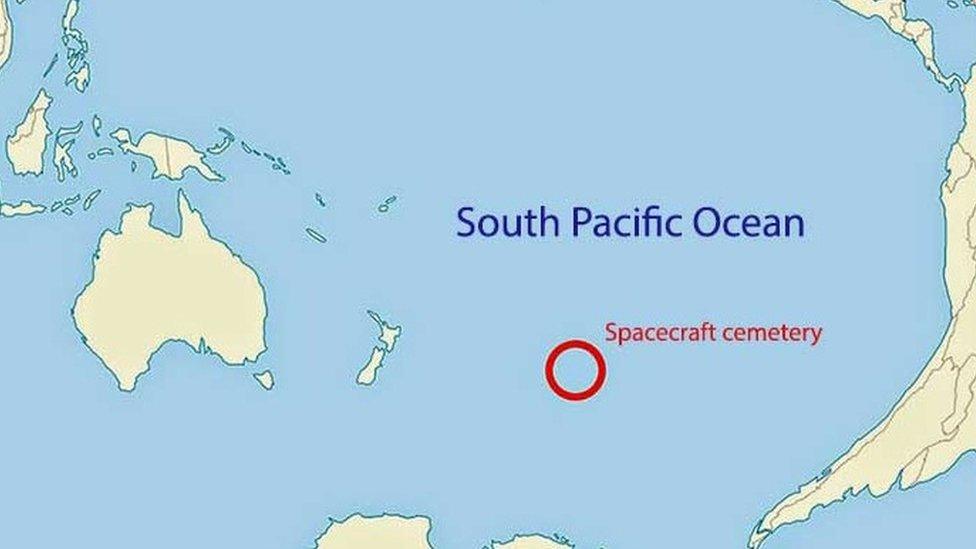Space cemetery: What is a space cemetery? What will happen to the ISS?
- Published
- comments

Out in the Pacific Ocean you can find the spacecraft cemetery
In an ocean far far away lies the spacecraft cemetery. Sound strange? Let us explain.
At the furthest place away from any human civilisation and 4km under the sea lies the space cemetery.
It's where old satellites, rocket parts and space stations are sent when their space journeys come to an end.
It's a deserted spot in the Pacific Ocean, east of New Zealand, where the items lie on the seabed forever.
What will happen to the ISS?
The ISS could end up in the spacecraft cemetery
The technical name for this area of water is called the ocean point of inaccessibility, because it is so far away from any land - 2,700km away exactly. But it is more commonly known as the space cemetery or Point Nemo.
This is where the International Space Station (ISS) that is currently orbiting Earth is likely to end up.
The ISS launched back in 1998 and astronauts have been living on board ever since. It is due to operate until 2024, but it is starting to age.
It's 357ft long, which is about the same size as a football pitch and made from many parts so they'll have to separate it in a controlled way before breaking it apart and sending it to Point Nemo.
Graveyard orbit
This computer made image represents the amount of space debris in low Earth orbit
When spacecraft die they become a danger to everything in orbit. Space debris can block up space and with the speed they travel they could cause damage to other space craft.
Nasa say there are thousands of bits of space junk out here.
"There is so much junk that we are worried one tiny collision could trigger a big chain reaction. This possibility is called the 'Kessler Effect'," Nasa says.
The Kessler effect or Kessler syndrome is because of the space pollution in orbit. Every time space debris collide, it creates more space debris and increases the chances of more collisions.
To stop collisions happening when you send something in space, you must have a plan in place to either send it back to Earth's atmosphere or into graveyard orbit, says Nasa.
Very high satellites can be sent into what they call graveyard orbit. This is an orbit nearly 322km (200miles) further away from Earth.
- Published20 July 2021
- Published3 November 2020
- Published7 September 2021
